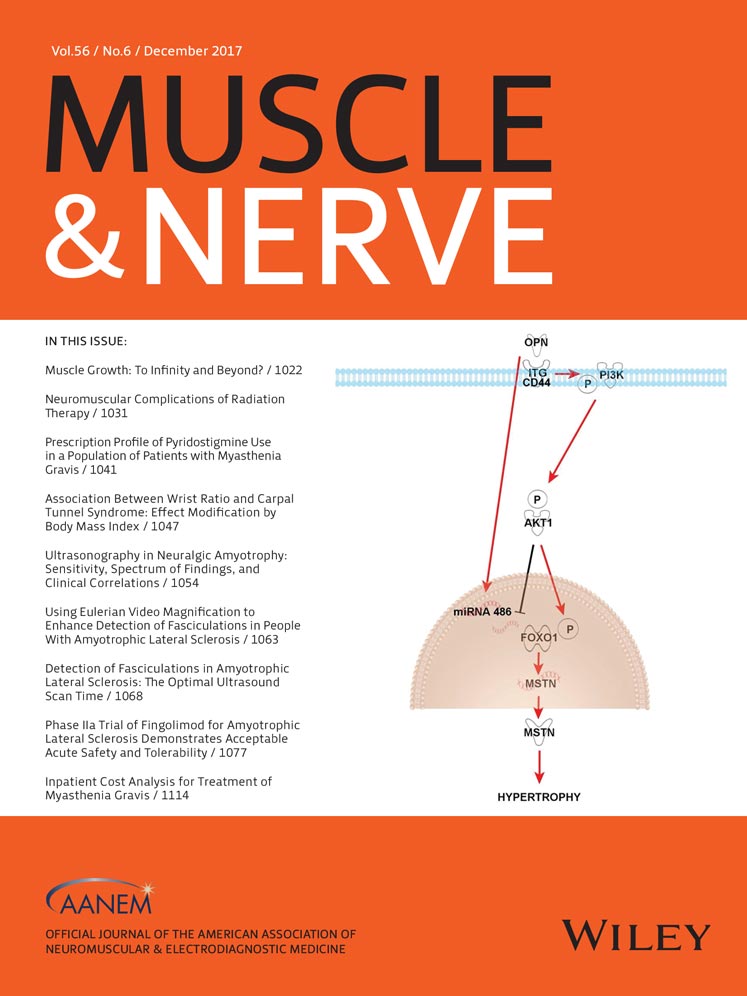Quantitative electromyography in ambulatory boys with Duchenne muscular dystrophy
ABSTRACT
Introduction
This study's objective was to evaluate quantitative electromyography (QEMG) using multiple-motor-unit (multi-MUP) analysis in Duchenne muscular dystrophy (DMD).
Methods
Ambulatory DMD boys, aged 5–15 years, were evaluated with QEMG at 6-month intervals over 14 months. EMG was performed in the right biceps brachii (BB) and tibialis anterior (TA) muscles. Normative QEMG data were obtained from age-matched healthy boys. Wilcoxon signed-rank tests were performed.
Results
Eighteen DMD subjects were enrolled, with a median age of 7 (interquartile range 7–10) years. Six-month evaluations were performed on 14 subjects. QEMG showed significantly abnormal mean MUP duration in BB and TA muscles, with no significant change over 6 months.
Conclusions
QEMG is a sensitive electrophysiological marker of myopathy in DMD. Preliminary data do not reflect a significant change in MUP parameters over a 6-month interval; long-term follow-up QEMG studies are needed to understand its role as a biomarker for disease progression. Muscle Nerve 56: 1361–1364, 2017




